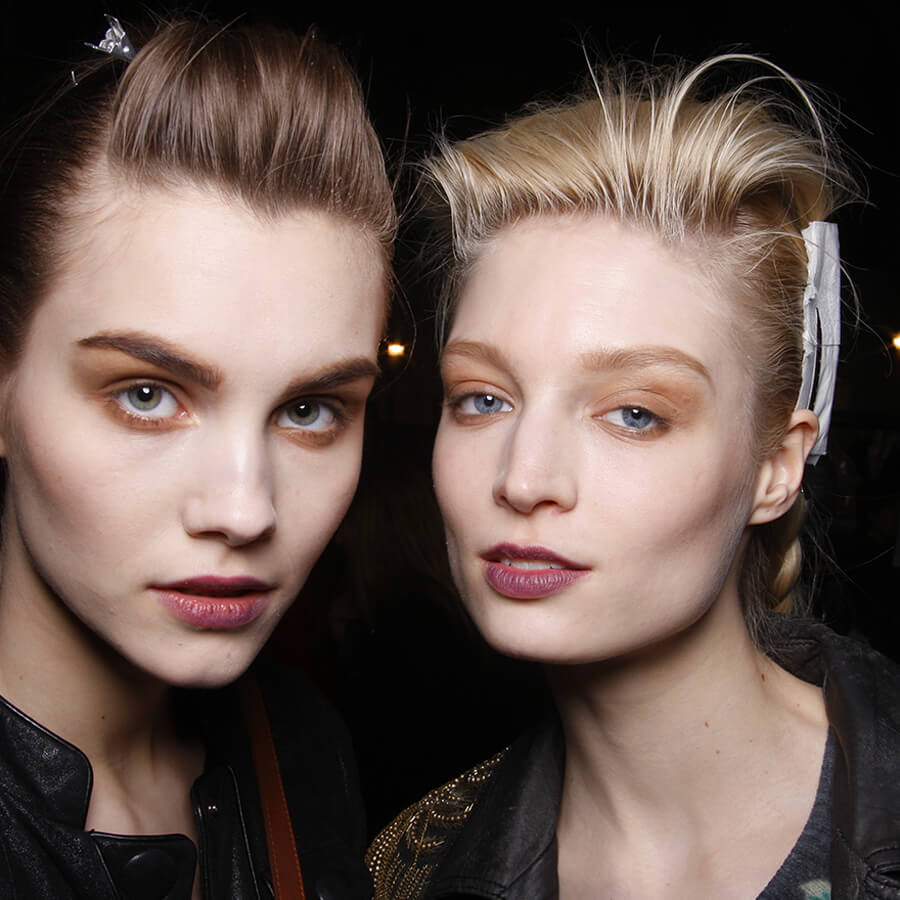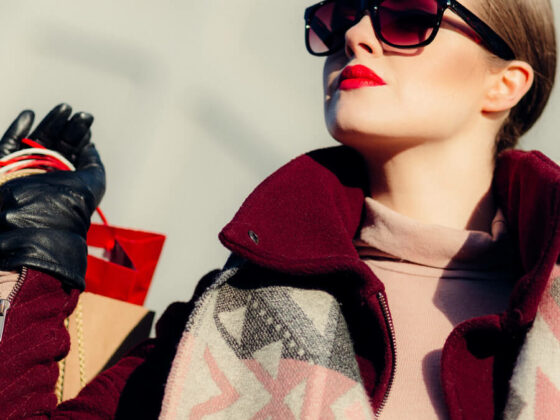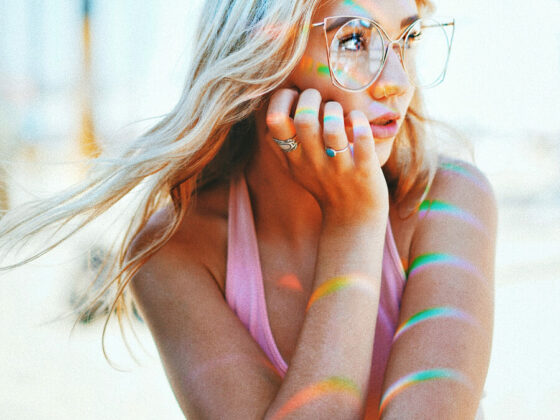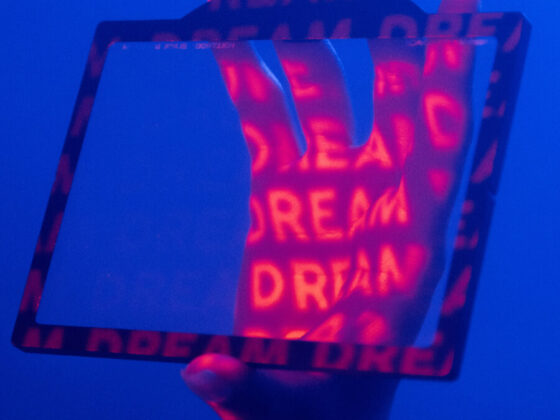Photographers like Richard Avedon, Helmut Newton, and William Klein have made the history of fashion photography with their irreverent and innovative language. The works of these masters have changed the perception of the female body by freeing it from rigid canons or obsolete stereotypes and inserting it into a representation of aesthetic and artistic value. Keeping these exemplary cases in mind, we at Studio Concept want to give you some tips on how to shoot a model.
Indice
How to organize a photo shoot with models
First, you need to have a creative project to carry out. Each photo shoot always begins with a creative idea to be developed together with the photographer and the client who commissions the work.
In the world of beauty, for example, a photo shoot may have the purpose of showing makeup worn with the colors of a specific collection being launched, or a specific collection of hair color and cut to be shown with a shoot in the studio or outside with a series of models.
Consistency in communication with respect to the brand identity, but also the desire to impress, transgress, be recognizable, and produce original and unique content.
We at Studio Concept internally carry out photo shoots with models for multiple uses with different communication purposes:
- photos of models wearing a distinct makeup
- macro photos of lips or eyes with makeup that enhances a certain color or collection
- model photos for hair stylist collections to showcase a special color or cut
- photo of cosmetic bulk worn as color notches on the model’s arm to show the color variations of a foundation, for example
- photo of a model showing a product or opening it or using it on her body
These are just a few examples of what can be achieved in the world of beauty.
Even using the image can change the style a lot. For example, an institutional shooting will be very different from a shooting to produce more immediate and faster social content.
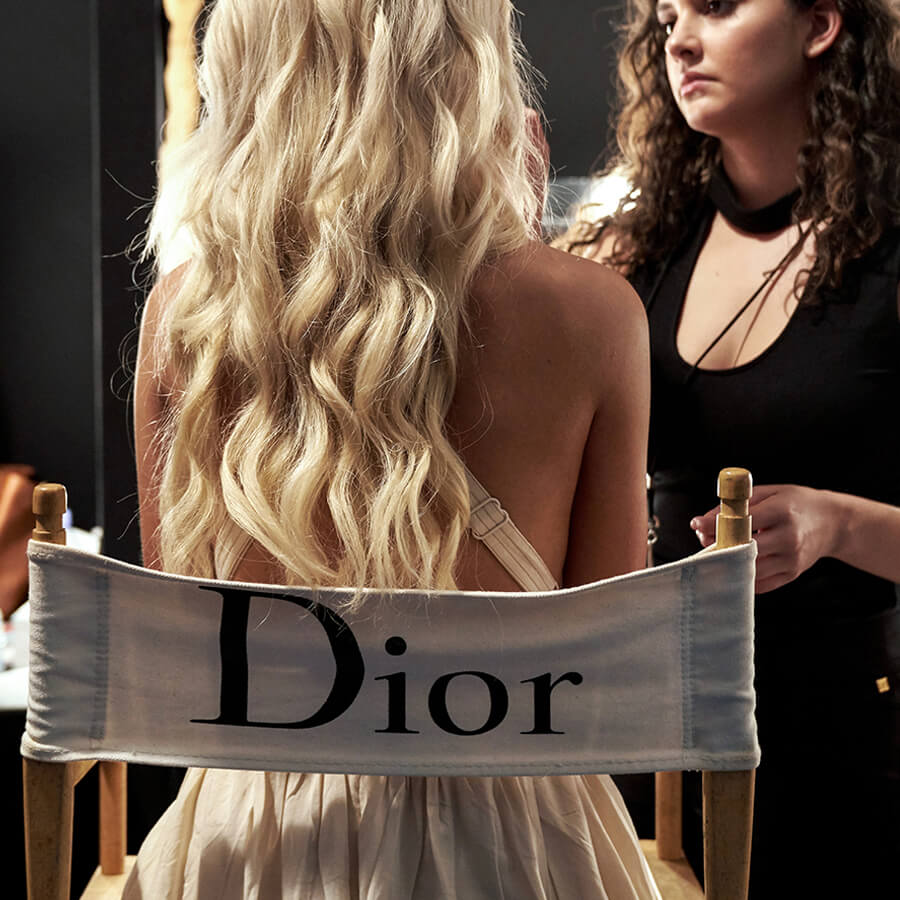
Which professional figures are involved in a shooting with models?
In the realization of a photo shoot many professional figures are involved who cooperate in the result:
- First of all, there is a creative agency that follows the project from start to fulfillment, coordinates the work, defines creativity, and collaborates in choosing the models. See our global communications services here.
- There is a professional photographer, with his own studio and photographic equipment. Many times the agency also acts as a photographic studio, as in the case of our agency Studio Concept, where we have our specialized photographers and our studios internally; but an agency must also be available to involve other photographers based on the characteristics of each specific project to be carried out or on the client’s needs.
- There are professional models to be selected through a special casting provided by specialized agencies. In Milan, for example, many specialized agencies supply models and models. The costs are significantly variable and for this reason, the client must always have a clear understanding of his investment budget based on which selects the models and pays the royalties to the agencies.
- The figure of the Makeup Artist is essential in shooting beauty models. Even the choice of makeup follows specific rules and above all a creative idea at the basis of the shooting. Many times, those who do makeup are also able to create professional hair styling. However, if the focus of the shooting is on hair, color, and shapes, the presentation of the hairdresser or hair stylist will also be necessary.
- The photographic post-production will ultimately be one of the elements that will make the photo shoot truly memorable and captivating. We at Studio Concept, an agency specializing in communication in the beauty and cosmetic world, have internal collaborators specialized in retouching and advanced post-production both on models and still-life of cosmetic products and we can offer a complete, all-inclusive, and high-quality service.
Contact us and we will be happy to put our twenty years of experience at your service.
How to photograph girls
At the time of the shooting, two things must be considered: what is the degree of experience of the model and what is the result that must be obtained with the series of photos. In fact, depending on her experience, the model will more or less need help and directions to move in front of the camera. Furthermore, the purpose of the book requires the photographer to carefully take care of all the details.
Shooting requires a lot of patience and stamina from both parties involved.
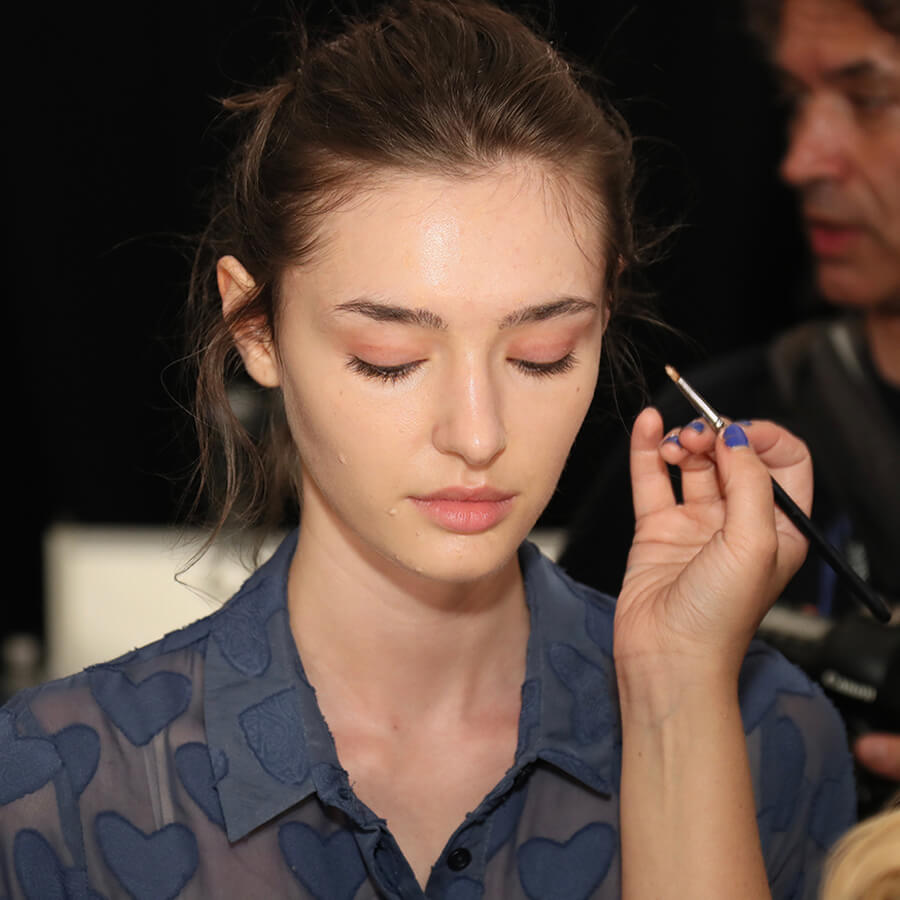
How much does a photo shoot cost?
At the beginning of his career, the photographer might take the photographs without any compensation, and that he is the one who has to pay the model for some test shots or to increase his portfolio. In these cases, the model offers her time for free and the photographer gets the photos he needs. Sometimes it is the model herself who needs the images to participate in contests or castings. This working method is known as TFCD (Time for CD) or TFP (Time for Print).
This is not the case with a shooting made by a professional photographer with the artistic direction of a specialized agency such as Studio Concept.
The costs are not low, and depend on many variations, above all the definition of creativity and the cost of the models with their usage rights. It is essential to be clear with customers about what makes up the final price.
The disclaimer must be signed
We live in the age of privacy protection and a good photographer must know that the subjects included in his photographs must have given their consent to be photographed and must have authorized the subsequent circulation of the image. This image, in fact, appears to be personal data (the regulatory reference concerns articles 96-97-98 of law n. 633 of 22 April 1941, GU of 16.07.1941 n.16 and subsequent amendments, on the “protection of the right of the author and other rights related to its exercise” and Article 10 of the Civil Code).
The document that grants these authorizations is the photographic release. It is a formal written declaration in which the photographed subject (whose face is recognizable in the photo) authorizes the photographer to publish his/her image for different purposes (photo exhibitions and competitions, website content, social media pages, or editorial material).
We recommend making two copies. In fact, the release serves the photographed subject to assert his/her rights and serves the photographer to make sure that the same subject will not incur legal action for something he believes illegal (among other things, the privacy law has quite severe punishments).
Tips on framing the model
The model must be able to move around the set just as the photographer must be able to direct her, just like a director.
The shots are: close-up, American shot, full figure, etc. (all terms that derive, in fact, from the language of cinema).
Then, you need to learn and take advantage of the rule of thirds to place the model’s body in the center or to the side of the frame.
The most important thing is to be able to break down any shyness or discomfort because the spontaneity and feeling that is created between the photographer and the photographed is essential for the success of the shooting.
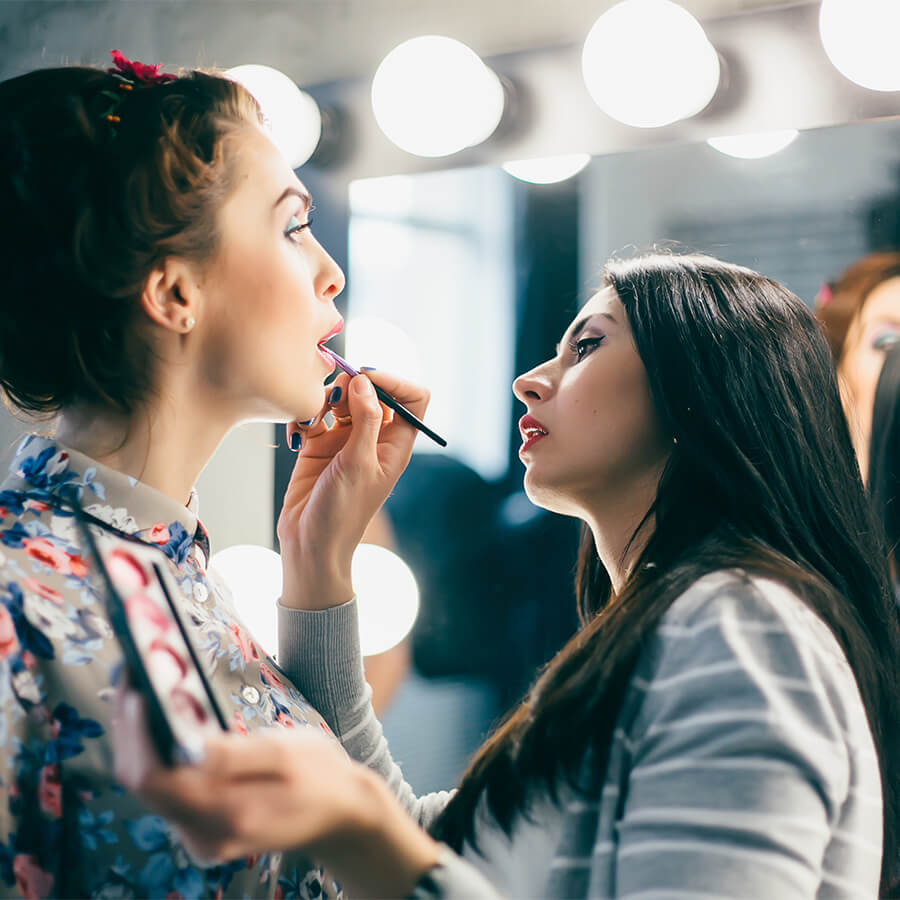
Contact us and we will be happy to put our twenty years of experience at your service.
Which lens to use
The choice of lens depends on the effect you want to obtain and that doesn’t necessarily have to be rigorous and classic. Choosing a specific focal length affects angle, depth, and perspective.
In addition to the normal lens, which is the most common, we recommend trying a telephoto lens to blur the background; a fisheye to place the model in the center of a distorted environment; a wide angle to get a more dynamic scene.
In all these cases the photographer must know how to calculate the focal length which allows for obtaining a singular and innovative but not destructive effect (one must avoid caricatural effects, distorted faces, blurred bodies, etc.).
But in the end, what matters is the result which is a combination of experience, creativity and organizational skills, and style. You can find all these different skills in an expert agency of the sector.
Lights and exposure
The correct lighting depends on the setting: will the shoot take place in an external or internal environment? Either way, the photographer must master natural or artificial light to achieve the desired effect.
As for the exterior, the lighting is dictated by direct sunlight or bounced off other surfaces. It is also necessary to consider the time of day: if you want to use natural light, the best moment is the one before and after sunset.
As for the interior, the lighting is determined by the sunlight entering through the windows or from other elements such as lamps, bulbs, candles, spotlights, etc.
In any case, if the photographer intends to have total control of the light, then he/she can resort to the use of tools such as flashes, speedlights, diffusers, reflectors, reflective panels, lights strobes, etc.
This allows you to specifically direct the light or bring out a specific area of the frame.
The photographer must also decide the location of the light source: front lighting reduces the depth of field; lateral lighting creates shadows and nuances; lighting behind the subject creates a silhouette.
The most fascinating result (or, as they say in jargon, softer) is the one obtained with a diffused light, that is a light which, starting from the source, radiates in several directions.
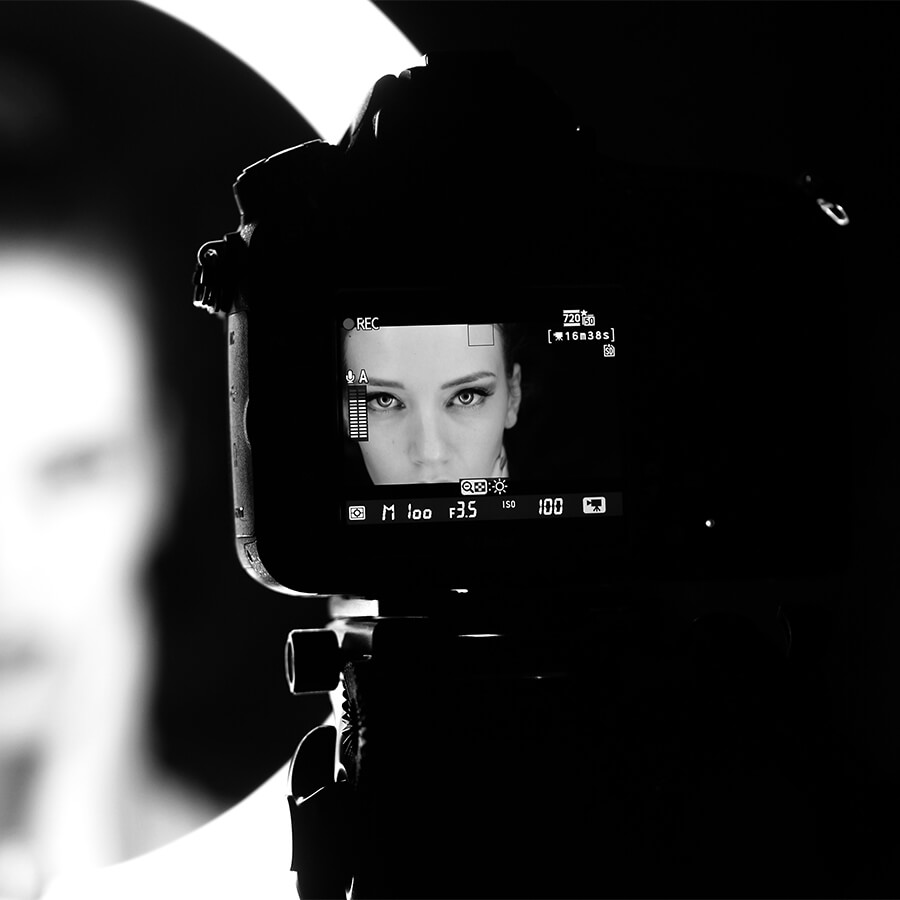
Examples of model poses
Lateral pose and hands on hips make the model’s physique slimmer and more seductive.
Angle from below and model leaning on a surface (for example a table or the hood of a car) allows the clothing worn to stand out. A shot from behind, in addition to emphasizing the beauty of the model, allows you to play with her identity. The model who walks with her face down accentuates the mysteriousness of her figure. Angle from above and model lying down allow to emphasize the shapes.
And then again: the model can play with her hair, she can bare her shoulders, can look straight into the camera lens, etc.
You should never force her movements but let the girl be as spontaneous and natural as possible. By stimulating her creativity and indulging her nature, the final result will amaze you!


